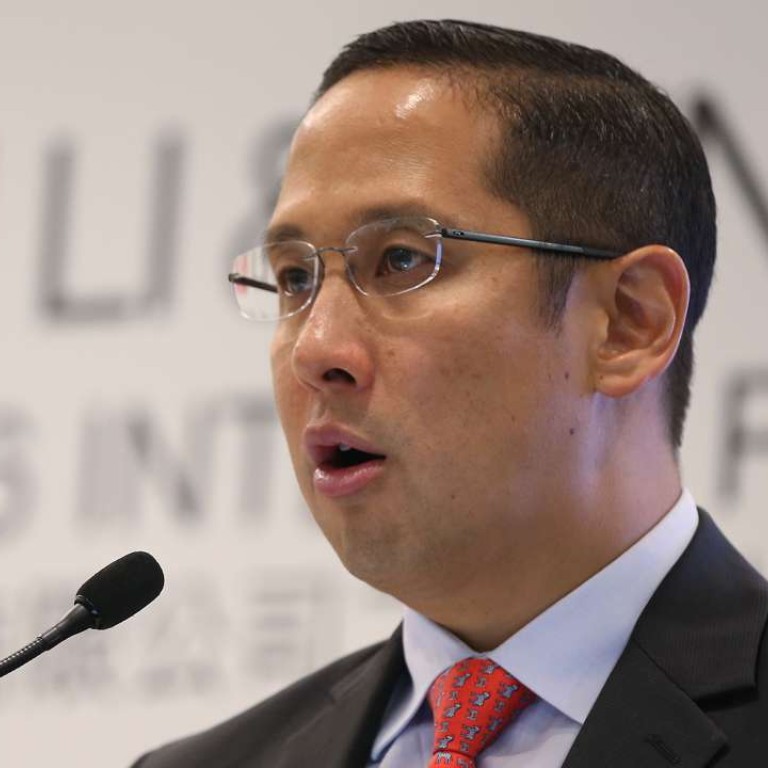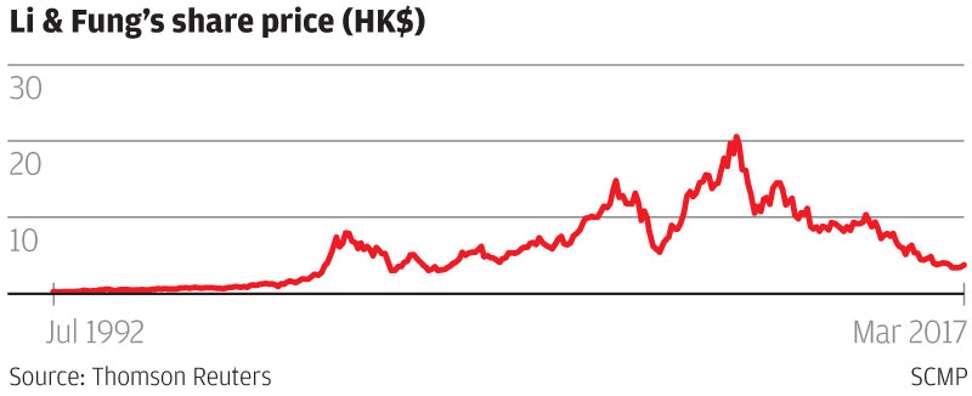
Analysis | Li & Fung’s latest attempt at reinvention latches on technology
CEO Spencer Fung this week unveiled a US$150 million, three-year plan to invest in IT for leading the company’s transformation
Li & Fung is trying to reinvent itself for the eighth time in 24 years.
The company, the world’s largest sourcing agent for customers including Wal-Mart Stores, will fully embrace information technology, which has already upended its century-old role as the quintessential middle person between producers and consumers, and is investing heavily to transform its business.
The transformation was given extra urgency this week, when chief executive officer Spencer Fung delivered Li & Fung’s third consecutive year of profit decline, missing analysts’ estimates with a 24 per cent slump. Core operating profit tumbled 44 per cent over three years while profit margin narrowed by 1.4 percentage point to 2.5 per cent.
“This has been one of the toughest trading environments Li & Fung has ever seen,” Fung said.
Li & Fung’s 2016 revenue fell for the third year, declining 11 per cent to US$16.8 billion, the lowest since 2009.
The only bright spot in its results was the logistics business, which reported 15.5 per cent growth in core operating profit, where the profit margin widened to 6.7 per cent due to rising e-commerce demand and expansions into the Japanese and South Korean markets.
Even so, depressed global freight rates and unfavourable currency movements meant the logistics operation failed to meet its goal of doubling its US dollar profit in the three years to last year.
Decline in sourcing and trading profit was to a small extent offset by higher earnings from Li & Fung’s growing services business where it helps factories cut material and finance costs, move to cheaper locations and comply with increasingly stringent health and safety rules.

Li & Fung was founded in Guangzhou in 1906 by Fung’s great grandfather. For more than a century, the company grew and prospered through its role as broker, facilitating trade and manufacturing between the mainland Chinese hinterland with the rest of the world.
The advent of the internet and e-commerce have dealt a severe blow to the company’s business, as customers and producers can now reach each other directly.
To reverse its fortunes, the company proposed a new three-year plan, after meeting its sales and profit goals in four of eight three-year plans made since 1993.
It’s fallen to Fung, 43, to turn things around. The Harvard University graduate took over the reins of the company as chief executive in 2014.
Fung this week announced a three-year, US$150 million plan to invest in information technology hardware and software, and to hire people who can use them, as the firm seeks to create “the supply chain of the future.”

“A digital supply chain is essential to service a highly digitalised marketplace,” Fung said.
Fung’s plan aims to halve the time it takes for products to move from concept to deliver to 21 weeks by 2019, from the current 40 weeks. That helps retailers better adjust to customers’ changing preferences and shopping behaviour more quickly, and help them compete with the online shopping platforms.
This involves “rapid prototyping” by using “virtual sampling” and “digital showroom” technology to cut the time needed to design, make, and seek approvals for product samples.
With Li & Fung’s huge international footprint and annual turnover, it a very large ship to steer.
“What used to take weeks and days can now be done in a matter of hours. There are new technologies available today for old economy companies to take advantage of,” Fung said. “The world is moving faster and faster; how we can move as fast as a startup” is the challenge, he said.
Not only is speed key to turning around Li & Fung’s sagging profits, the vast quantity of data at its disposal is also important for making its supply chain more efficient, cheaper and better able to help customers differentiate their products.
Still, not everybody is convinced the new plan could bring a turnaround any time soon.
Li & Fung’s shares fell in the two days after its results and its business plan, trading recently near a 14-year low of HK$3.30. Only one analyst out of 13 covering the company is recommending investors “buy” the stock.
“We are not yet convinced that the speed and innovation will be able to pull up sales growth notably,” said JPMorgan Chase & Co.’s Ebru Kurumlu, the lead analyst in a report with a “neutral” recommendation on the stock, and a projection that the annual operating profit growth will only average 6 per cent over three years.
To realise the ambitious goals, Li & Fung also needs a change in mindset for the company’s 22,000 employees, according to Fung.
The company used to offer its “solutions to retailers and brand owners who have little knowledge about products and supply chain” in the last 100 years, he said. “Now, our approach is: what is the business model that you want, and how can we help? We can also use this approach with our bigger customers in future.”
While the Hang Seng Index has gained almost 10 per cent this year, Li & Fung’s shares have fallen 1 per cent. It was dropped as one of the 50 constituents of Hong Kong’s Hang Seng Stock Index, losing the position it’s held since 2000.
Some analysts don’t see any quick fixes to the company’s challenges, even if they agree with its strategic direction, especially since it requires upfront investments that can only be paid off in future years.
“We share Li & Fung’s view on the growing importance of speed to market. However, macro and industry challenges will weigh on its earnings outlook,” said Deutsche Bank analysts Anne Ling and John Chou, who forecast 2.7 per cent compound average growth on its core operating profits until 2019.
(Corrects Spencer Fung’s title in third paragraph to chief executive officer)

